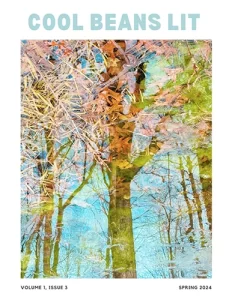Thrice Fiction – July 2012
Issue 5
July 2012
Triannual
Kenneth Nichols
Editor RW Spryszak begins this issue of Thrice Fiction by addressing the misconceptions some have with regard to “micro fiction.” Spryszak rejects the notion that flash fiction is “experimental” and has a very good point. “Experimental” implies that a piece isn’t fully formed “or that the writer doesn’t know what they’re trying to get at . . . by the time something is ready for public viewing the experiment should be over.” The writers whose work is represented in Thrice Fiction make use of the toolboxes of both poets and short story writers to create stories that are as emotionally potent as they are brief.
Editor RW Spryszak begins this issue of Thrice Fiction by addressing the misconceptions some have with regard to “micro fiction.” Spryszak rejects the notion that flash fiction is “experimental” and has a very good point. “Experimental” implies that a piece isn’t fully formed “or that the writer doesn’t know what they’re trying to get at . . . by the time something is ready for public viewing the experiment should be over.” The writers whose work is represented in Thrice Fiction make use of the toolboxes of both poets and short story writers to create stories that are as emotionally potent as they are brief.
One of the great challenges of flash fiction is to cram discussions of complicated issues into a handful of pages. MaryAnne Kolton’s ”A Map of Reality” tells the story of Lloyd Dean, a recent high school graduate from a well-off family who made the mistake of impregnating a junior from a lower-class family. “Lloyd’s football scholarship from Duke was forfeited like an expensive watch, pawned, never to be retrieved. Bethann would get her GED at some point.” The narrator focuses on Lloyd’s half of the story. (Or is it his third of the story?) Although the pregnancy is recounted at breakneck pace—by necessity—Kolton manages to provide enough insight into Lloyd to justify the action he takes at the end of the piece.
In “Spilling Out,” Eddie Jeffrey’s narrator experiences the hell of battle. PFC Whelan endures the heat of the Nui Ba Den valley, terrified he will forget some crucial piece of his training. Then he steps into a punji pit, the “buffalo dung-dipped stakes protruding through the top of his boot.” When Whelan wakes up, he’s in the middle of a firefight. When he wakes again, he is in the hospital. The beating heart of Jeffrey’s short story is the one-sided discussion Whelan has with his doctor. What, if any, are the differences between those who volunteer for war and those who are conscripted?
Micro fiction is a genre that lends itself particularly well to depicting small moments in a meaningful fashion. The first-person narrator of Susan Tepper’s “Casino” is a beautiful woman who is spending her time with a much older and much wealthier man. When they stroll through the casino, “men look at him and nod and he nods back. It’s all this secret code thing men have. Rich men.” The narrator knows she is as much an accessory as her boyfriend’s cufflinks and believes she understands what motivates men. Tepper takes her examination of the relationship between rich men and beautiful women one step further: a gambler seizes her hand in hopes she will extend his winning streak. The resolution of the story implies that the narrator has gained some new measure of self-understanding, leading the reader to wonder what happens to her after Tepper’s story ends.
Another great strength of Thrice Fiction is its attractive design. Each story is accompanied by a relevant illustration that influences the reader’s understanding of the piece. The vignettes in Marcus Speh’s “Android Clippings,” in fact, are presented as though some reader from the distant future is encountering news stories from our present and past. There are many literary journals that will appeal to friends and family who don’t normally read them; Thrice Fiction is certainly a prime candidate to be given as a gift.
[www.thricefiction.com]




